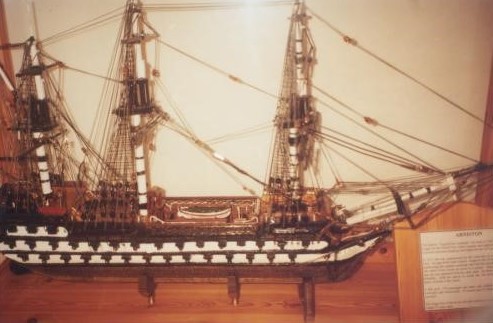Swellendam
https://swellendamheritage.org.za/
https://www.gapahouse.co.za/about-swellendam.html
https://southafrica.co.za/history-swellendam.html
https://showme.co.za/lifestyle/the-republic-of-swellendam/
https://sites.google.com/view/convent-swellendam/home
https://www.youtube.com/watch?v=eM6GH9QM8JA
https://digital.lib.sun.ac.za/handle/10019.2/5234
https://www.drostdymuseum.co.za/about-us/
https://www.capetownmagazine.com/swellendam-experiences https://www.wine-searcher.com/regions-
Bontebok National Park, Swellendam
Bontebok National Park is the smallest National Park in South Africa; it is only 28 square Kilometers. Therefore, the Park is very rewarding in your animal sightings!
The Bontebok is a medium sized antelope, with a multi-coloured coat which is endemic or native, to the Western Cape. This species is unfortunately listed on: "the International Union for Conservation of Nature's Red List, of Threatened Species!" There is however, a variety of beautiful Rare Fynbos, abundant birdlife, tortoises; Mountain Zebra and much more, to be seen, in the Park. Walking and Mountain Biking Trails are available as well as Picnic spots, along the Breede River.
Swellendam connects the Overberg with the Garden Route and is an attractive Town with the Koornlands River running through it. Beautifully Historic sitting at the base of the Langeberg mountains near to the R62’s Tradouw Pass, Swellendam is in the perfect location from where to explore the surrounding Areas. Surrounded by Nature Reserves hiking is a popular past-time -( bring your binoculars as the birdlife is amazing!) There is a kaleidoscope of flora and fauna providing great photographic opportunities. The three reserves that are near Swellendam are; the Bontebok National Park, Marloth Nature Reserve and the expansive De Hoop Nature Reserve.. The Bontebok is a medium sized antelope, with a multi-coloured coat which is endemic or native, to the Western Cape. This species is unfortunately listed on: "the International Union for Conservation of Nature's Red List, of Threatened Species!" There is however, a variety of beautiful rare Fynbos, abundant birdlife, tortoises; Mountain Zebra and much more, to be seen. Walking and Mountain Biking Trails are available as well as Picnic spots, along the Brede River.
https://www.sanparks.org/wp-content/uploads/2021/06/bontebok_approved_plan.pdf
https://www.capenature.co.za/reserves/marloth-nature-reserve
https://www.places.co.za/accommodation/bontebok-national-park.html
https://www.sanparks.org/parks/bontebok/all.php
https://www.top-rated.online/cities/Swellendam/place/p/1137768/Bontebok+National+Park
https://swellendam.com/koornlands-river-clearing/
https://www.sanparks.org/parks/bontebok
https://www.sanparks.org/parks/mountain-zebra
https://www.krugerpark.co.za/krugerpark-times-2-6-tortoises-terrapins-turtles-19370.html
https://gobirding.birdlife.org.za/
https://mapmyway.co.za/rare-and-endangered-fynbos-plants-blooming-around-cape-town/
https://www.sahistory.org.za/place/zorgvliet-wine-estate-stellenbosch
https://www.sahistory.org.za/place/clanwilliam-stellenbosch-district
https://www.sahistory.org.za/place/welgelegen-farm-stellenbosch
Wagenaer's Reservoir, Sanlam Golden Acre-Cape Town
In the heart of the 'Mother City', Golden Acre Shopping Centre has been a key part of everyday life in Cape Town since 1979.
This shopping-Centre on the site of the original train station, the shopping Centre forms an integral link between the CBD and is an underground passage to other, major public transport systems. This ancient aqueduct dates back to the 1600's. This ancient structure was originally built in 1663, to capture and supply water for the ships sailing around the Cape toward the Spice Islands.
These ruins are located inside this shopping mall in Cape Town. The ruins just happened to be unearthed in 1975, in the building of this complex, in the heart of Cape Town. These ruins have been preserved exactly where they were found and since then have been declared a National Monument. When Jan van Riebeek arrived at the Cape in 1652 he had a dam dug to supply water to sailing ships. This proved unsatisfactory, and in 1663 the Here XVII, or Board of Directors of the Dutch East India Company, (VOC), instructed Zacharias Wagenaer, the only German Governor of the Dutch East India Company, to build a reservoir to improve the water-supply. A part of this reservoir' and later structures built in the area were discovered during the building operations (of the Golden Acre Mall Complex) in 1975. The ruin was excavated by the South African Museum. They are the oldest remaining Dutch structures in South Africa.
The Arniston

The Arniston was built on the River Thames, England in 1794. It was a three-decked and three-masted British East Indiaman vessel and was first used as a trading ship, completing eight successful voyages between India and China from November 1794 to June 1813 (Wreck of the Arniston | Time and Navigation, n.d.). Thereafter it was recommissioned to serve as a troop transport in 1813 or 1814 between England, India and Ceylon (now Sri Lanka) for the Royal Navy.